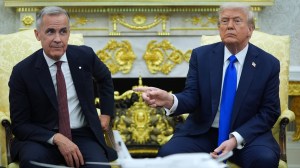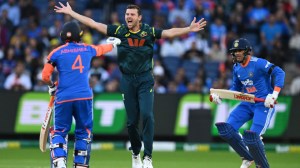Forget the WEF, listen to the World Bank — Govt
NEW DELHI, NOV 29: Despite the harsh treatment that the Indian government got at the hands of Indian and foreign investors at the World Ec...

NEW DELHI, NOV 29: Despite the harsh treatment that the Indian government got at the hands of Indian and foreign investors at the World Economic Forum over the last two days, it may still have some reason to celebrate. The euphoria stems out of the fact that the World Bank chief James D Wolfensohn gave India a very positive report in his presentation at the meeting of the Board of Governors of the World Bank Group at Prague last month.
Wolfensohn’s presentation to the Directors is now a prized possession in North Block, housing the Finance Ministry, with the report being brandished as a certifying the bright future that the Indian economy could still hold. The Finance Ministry now uses this prsentation for all foreign investors, financial institutions and banks who may show concern over the slowdown of the economy.
The World Bank has stated that the fundamentals of the Indian economy were strong despite the several shocks – the East Asian crisis in 1997 followed by economic sanctions against india in the aftermath of the nuclear tests in 1998, the Kargil conflict in 1999 and the abnormal increases in international oil prices in 2000.
The Report has also commended the growth of GDP which it expects to be over six per cent during 2000-2001 compared with seven per cent in 1994-95 and 6.4 per cent in 1999-2000. It has also pegged the foreign exchange reserves at a healthy $ 35 billion at the end of October with the esxternal debt to GDP ratio improving to 22 per cent at the end of March 2000 compared with 30.9 per cent in 1994-95, 24.4 in 1997-98 and 23.5 in 1998-99.
The World Bank has also lauded the lower inflation rates during the current year likely to be in the range of 6.5 to seven per cent during 2000-2001. Even export growth, is likely to exceed the target of of 18 per cent growth in dollar terms during the current year.
On the social indiactors, the Bank has commended the performance on the literacy front with literacy rates improving from 52 per cent to 64 per cent during the period 1990 – 99. The significant increase in the enrollment and retention of girls in educational institutes.
Kerala has been voted the best performing state when seen on the grounds of social indicators iwth literacy at 93 per cent, female literacy at 90 per cent, birth rate at 17.8 per thousand and infant mortality rate at 12 per thousand. In contrast the worst state in literacy is Bihar with a rate of 49 per cent and female literacy at 34 per cent. Uttar Pradesh has a birth rate of 34 per thousand and an infant mortality rate of 96 in Orissa.
Also worrying are indicators like the fact that TB still kills 1000 Indians every day even now. ALso finding a mention in the report is the fact that 3.5 million people in India are infected with the HIV virus with 3.1 lakh people dying in 1999 due to this.
The Bank has also lauded the Reforms in the field of insurance liberalisation, thrust to disinvestment, reduction in food and fertiliser sibsidies, Expenditure Reforms Commission, liberalisation in the FDI norms, MOUs with states for fiscal reforms, liberalising the foreign trade regime and the continuous addressing of the issues relating to good governance.
At the bottom of the Bank’s close watch on India is the fact that Bank loans and International Development Association’s (IDA) assistance to the Indian subcontinent have been dropping from a peak of $ two billion in 1992 to $ 1.2 billion in 1998. The Bank would like to enhance this to $ two billion in 2001 and $ three billion in 2002. A target of an additional $ one billion commitment from IDA for social sectors is also on the cards, as mentioned by the Report.



- 01
- 02
- 03
- 04
- 05




























